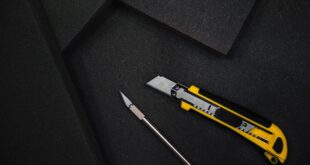Gardening for Beginners: A Comprehensive Guide
Growing your own garden can be extremely rewarding, not only because it allows you to enjoy fresh produce and flowers, but it’s also an opportunity to connect with nature. However, if you are a beginner, gardening can seem overwhelming. Don’t worry, this guide will show you the basics of gardening that you need to know.
Preparation
Before starting on your gardening journey, there are a few things that you need to prepare for:
Planning Your Garden
Determine what kind of plants you want to grow and how much space you have. It’s also essential to consider growing conditions, such as sunlight, water, and soil quality.
Tools and Equipment
To start your garden on the right foot, there are a few necessary tools to include, such as a hand trowel, gardening gloves, hand pruner, and watering can, among others. Of important note is a plant container or pot.
The Soil
The soil is the foundation of any garden, and you need to ensure that it’s in a healthy condition for the plants and flowers to grow. You can do this by inspecting the soil by testing its pH, tilling it or loosening of compacted soil.
Choosing Plants & Seeds
It’s essential to choose the right type of plants or seeds based on the conditions of your garden such as sunlight exposure minimal maintenance.
Annual vs. Perennial Plants
Annual plants only last for one growing season, while perennial plants keep coming back year after year.
Seeds vs. Transplants
Seeds are less expensive and provide you with more choices related to the plant types while Transplants are also a great option for beginners because they require less work.
Gardening Care
The secret to gardening lies in ongoing care/maintenance to keep your garden lush green and colorful. The following tips will help:
Watering
Plants require different amounts of water, so take note of how much water your plants need, depending on the ambient climate condition.
Pruning and Deadheading
Pruning involves the removal of diseased, damaged, or dead portions of the plant to maintain optimal plant hygiene. Deadheading involves the removal of the dying petals of the plant to allow fresh growth/bloom water-consuming.
Fertilizer
The quality of the plants you grow can improve significantly if they receive healthy nutrition through fertilizing.
Conclusion
Starting a garden can feel daunting, the efforts reaps far-reaching rewards of colorful blooms or delicious edible produce enhancing your vitality rooted to nature. By understanding the basics, and with enough patience and dedication, you can establish your garden and watch it thrive. Happy planting!
 Mind Uncharted Explore. Discover. Learn.
Mind Uncharted Explore. Discover. Learn.




